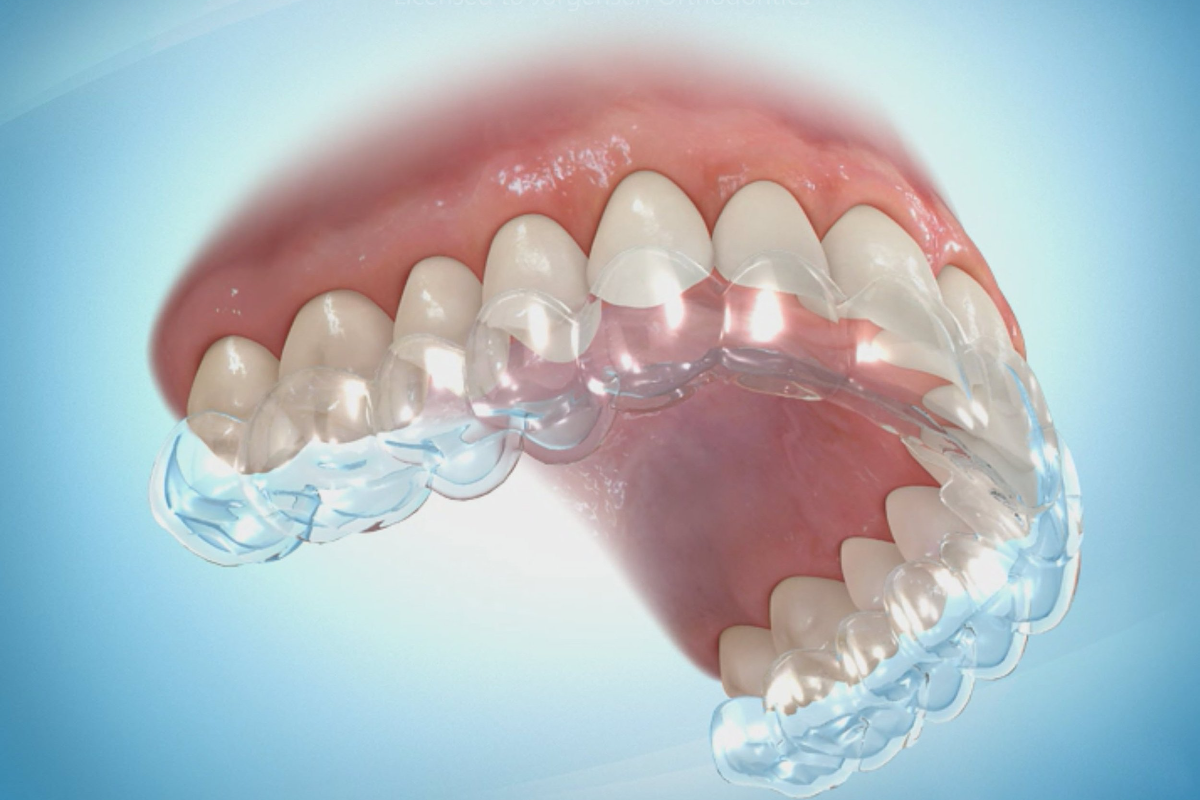
If you’ve ever dreamed of a straighter smile but dread the thought of pain, you’re not alone. Many people are hesitant about starting orthodontic treatment because they fear discomfort—especially with newer treatments like Invisalign. But is that fear really justified?
Let’s get right into it and separate fact from fiction when it comes to Invisalign and pain.
Understanding Invisalign: What Is It Exactly?
Invisalign is a modern orthodontic treatment that uses a series of custom-made, clear aligners to gently shift your teeth into their ideal position. Unlike traditional braces, Invisalign doesn’t use metal brackets or wires. It’s nearly invisible, removable, and fits comfortably over your teeth like a snug mouthguard.
But just like any method that moves your teeth, it does apply pressure—and that’s where most people start wondering: Does it hurt?
Myth #1: Invisalign Is Extremely Painful
The most common misconception about Invisalign is that it’s painful. While some people may experience temporary discomfort, calling it painful is a stretch. Most patients report feeling a slight pressure or tightness, especially during the first few days after switching to a new set of aligners. That pressure is actually a good sign—it means the aligners are doing their job and your teeth are moving.
Think of it like a new pair of shoes: it might take a little time to get used to them, but that doesn’t mean they’re painful. And once your mouth adjusts, the aligners become second nature.
If you’re receiving Invisalign in Etobicoke, your provider will guide you through the process and ensure your treatment is progressing comfortably.
Myth #2: The Discomfort Never Goes Away
Another myth is that the discomfort lasts the entire duration of treatment. In reality, any sensitivity typically subsides within 48 to 72 hours after putting in a new tray. This happens every one to two weeks as you switch aligners, and each transition becomes easier as your teeth gradually shift.
Here’s the key: Invisalign moves teeth more gently than traditional braces. There are no wires to tighten and no metal parts irritating your cheeks and gums.
Myth #3: Invisalign Irritates Your Mouth
People often assume that aligners cause gum or cheek irritation. But because Invisalign trays are made from smooth, medical-grade plastic and tailored specifically for your teeth, they fit precisely and don’t have sharp edges.
You may feel a bit of friction for the first few days, especially if you’re adjusting to how they feel inside your mouth. But it usually resolves quickly. In rare cases, your dentist in Etobicoke can smooth any rough edge or adjust your aligner to improve your comfort.
How to Manage Initial Discomfort
Even though Invisalign isn’t painful for most, you might still feel some tightness. Here’s how to stay ahead of it:
-
Switch aligners before bed: You’ll sleep through the initial pressure.
-
Stick to soft foods: Things like soup, mashed potatoes, and smoothies can be helpful.
-
Use cold compresses: If your jaw feels sore, a cold compress can help soothe it.
-
Pain relievers if needed: Over-the-counter options like ibuprofen can reduce any inflammation or soreness.
By following these simple tips, you’ll be back to your normal routine in no time.
The Psychological Side: Pain vs. Perception
One often overlooked aspect is how much of our pain perception is mental. If you go into the process expecting it to be painful, you’re more likely to focus on and amplify any minor discomfort. But when patients are reassured and educated on what to expect, they tend to adapt quickly and report a more positive experience overall.
This is why it’s so important to choose a provider who walks you through the journey with clarity and support. At a reputable dental clinic in Etobicoke, your comfort will always be a top priority from the first consultation to your final results.
Invisalign vs. Braces: The Comfort Comparison
Let’s compare Invisalign with traditional braces for a moment. Braces require periodic wire tightening, which can cause soreness, especially after adjustments. They also include metal brackets that can irritate your gums and cheeks.
Invisalign doesn’t have these issues. Since there’s no hardware involved, there’s far less friction, no emergency visits for broken wires, and no dietary restrictions. You remove the aligners to eat, which means you can still enjoy your favorite foods without worry.
Many patients say Invisalign is more convenient, more comfortable, and less disruptive to their daily life.
Final Thoughts: Is Invisalign Worth It?
If you’re worried about pain, know that Invisalign is designed to be a low-discomfort treatment. Some tightness is expected as your teeth move, but it’s manageable and temporary. For most people, the benefits—discreet appearance, removability, fewer dental visits, and less irritation—far outweigh the initial adjustment period.
Whether you’re a teen or adult, Invisalign offers a clear path (literally!) to a straighter smile—with minimal impact on your lifestyle.
If you’re ready to explore whether Invisalign is right for you, speak with a professional who offers personalized, comfort-focused care. A good place to start? Your local dental clinic in Etobicoke, where experienced professionals can create a custom treatment plan that suits your needs.